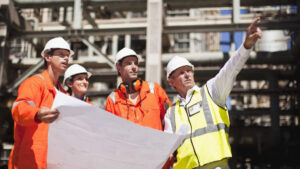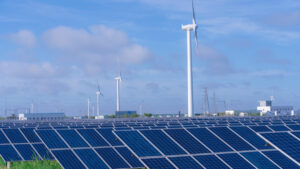Green Energy: IPCC report paints grim picture, but getting to net zero will have an impact

Pic: Yuichiro Chino / Moment via Getty Images
The Sixth Assessment Report from the Intergovernmental Panel on Climate Change (IPCC) paints a grim picture of the potential scenarios that will play out if greenhouse gas emissions from power generation, agriculture, industry and transport continue on their current trajectory.
With high certainty, the international team of climate scientists who form the IPCC can say that since the late 1800s, the ~2.4 trillion tonnes of CO2 we’ve pumped into the atmosphere has lifted global temperatures over land and sea by 1.07C on average.
In Australia, average land-based temperatures have increased by 1.4C since the late 1800s, the report authors say. Global average increases are expected to hit 1.5C early in the next decade at current rates, threatening the less than 2C threshold set out in the Paris Agreement.
Even if emissions reductions are achieved as fast as possible, the world will still see likely overall temperature rises of 1.5C on pre-industrial levels by 2040.
But if action is taken quickly, the IPCC says it is very likely that will begin to come down by the end of the 21st century. If not, those temperatures will rise higher — bringing potentially catastrophic impacts.
What is Australia going to do about it?
Same thing as before apparently; it’s up to the technology, says Angus Taylor.
“We are reducing emissions in a way that transforms industries through the power of technology, not through taxes that destroy them and the jobs and livelihoods they support and create,” he claimed.
PM Scott Morrison restated the position in response to questions from media today saying measures like carbon prices would “not solve the problem,” saying two-thirds of emissions were in the developing world, and particularly China.
“That doesn’t solve the problem, because it doesn’t solve the problem in India,” he said.
“It doesn’t solve the problem in Vietnam or in Indonesia or in China or in South Africa.”
Australia has faced persistent criticism both internally and in the international community for its 2030 emissions reduction targets of 26-28% on 2005 levels, which are viewed by many scientists and other critics as unambitious.
It currently has the highest rate of take-up of rooftop solar in the world, and was one of the globe’s biggest growth markets for large scale wind and solar over the past couple years.
The IPCC report will provide further steam for companies operating in the renewable energy sector to lobby for increased investment and put pressure on large industrial emitters to reduce their carbon footprint.
Kane Thornton, CEO of the green energy lobby group the Clean Energy Council, said the report highlighted the need for investment in the sector. It has recently been critical of government decisions including the expansion of the ARENA remit to include ‘low emissions technologies’ like carbon capture and storage and the ESB’s recommendation of a capacity payment opponents claim could keep coal-fired generators in the market longer than necessary.
“Nationally, energy policy has been politicised for far too long, and AR6 lays out the consequences of continuing to delay the clean energy transition,” he said.
“Australia is in an enviable position to be able to harness the power of clean energy resources, providing a pathway to turning our reputation as a climate laggard around.”
Wartsila gets nod for 250MW AGL big battery
Engineering giant Wartsila has earned a major contract to deliver one of Australia’s biggest batteries at AGL’s Torrens Island gas plant in South Australia.
With the South Australian grid increasingly turning to wind energy, AGL has announced plans to shut one of the gas units at Torrens Island.
It had already revealed its intentions to build a 250MW battery there as it transitions traditional generating assets and plans to install up to 1GW of grid scale energy storage across the country.
The battery Wartsila is building for AGL would be the second biggest in the country and become operational by 2023.
AGL (ASX:AGL) is in the midst of a plan to demerge its retail business as AGL Australia and spin out its coal and gas generating assets, as well as some of its renewables into Accel Energy.
Spark gets a new bidder, green energy companies get IPCC bump
The $5.2 billion bid for control of energy infrastructure and green energy hopeful Spark Infrastructure (ASX:SKI) has taken another turn with the North American consortium behind it adding more heft.
Canada’s Public Sector Pension Investment Board has joined the party, which also includes Kohlberg Kravis Roberts and the Ontario Teachers Pension Fund.
Meanwhile there were small bumps for a handful of renewable energy plays in early trade, potentially off the back of the IPCC report.
Hydrogen shipping developer Global Energy Ventures (ASX:GEV) was up 4.17%, having announced plans to complete a feasibility study on introducing its proposed compressed hydrogen shipping model for Province Resources’ (ASX:PRL) HyEnergy green hydrogen proposal in WA. Province was also up 7.14%.
Lion Energy (ASX:LIO) gained 10% by 12.30PM AEST, while green lithium company Vulcan (ASX:VUL) continued its march higher, with renewables generator Genex (ASX:GNX) was also up.
Related Topics

UNLOCK INSIGHTS
Discover the untold stories of emerging ASX stocks.
Daily news and expert analysis, it's free to subscribe.
By proceeding, you confirm you understand that we handle personal information in accordance with our Privacy Policy.








